The best Scottish castles to live like a royal
From Queen Elizabeth II to Prince of Wales, the royals have always loved a Scottish getaway. Here are five to try on your next UK adventure.

With its rugged coastline and stunningly sparse countryside, Scotland has always been a favourite holiday haunt of the British royal family. Indeed, Queen Elizabeth II was so attached to the country, she spent three months every summer at Balmoral Castle in Aberdeenshire, which was also where she chose to live out her final days.
And only this month, her eldest grandson, William, Prince of Wales and the future king, chose to spend his 14th wedding anniversary with Princess Kate at the more frugal but no less bewitching setting of the Isle of Mull in the Western Isles. The royal couple were staying in a bothy, a humble dwelling built by shepherds and farmers in a bygone age to shelter from the harsh Scottish conditions, and which are fast becoming popular with seasoned travellers. How times have changed.
Once upon a time there were 3000 castles in Scotland, a country smaller than Tasmania; 1500 remain. So it was hardly surprising that, when I opened my window blind over breakfast on the Caledonian Sleeper, the overnight train from London, the first thing I saw as I gazed across the heather was a moody castle ruin gazing down at its own reflection in the dark waters of a loch. Scotland is chockers with castles.
And a surprising number are intact. They range from vine-strangled medieval bastions with moats to 19th-century baronial residences that mimic the swank and the battlements of their more blood-stained predecessors. Wrapped in mists or gleaming in swathes of Scottish sunlight, castles were Caledonia’s dreaming towers, where everyone sought their fortune, where scholars found patronage, where minstrels sang and poets declaimed, where treaties were signed and plots were hatched, where mercenary soldiers loitered and vengeful princes whispered on back stairs.
You can plan a whole Scottish itinerary around castles. So that at day’s end there are always towers silhouetted against a darkening sky, windows glowing invitingly in the long Scottish twilight, and a crackling fire in the flag-stoned entrance hall, along with the fishing rods, the Wellington boots, and the walking sticks. Romantic, charming, haunted, castles are the best places to stay in Scotland. You can even have some all to yourself. Pull up the drawbridge and settle down by the fireplace with a dram of whisky, and play laird of the manor within storied walls. Here are five of the best.
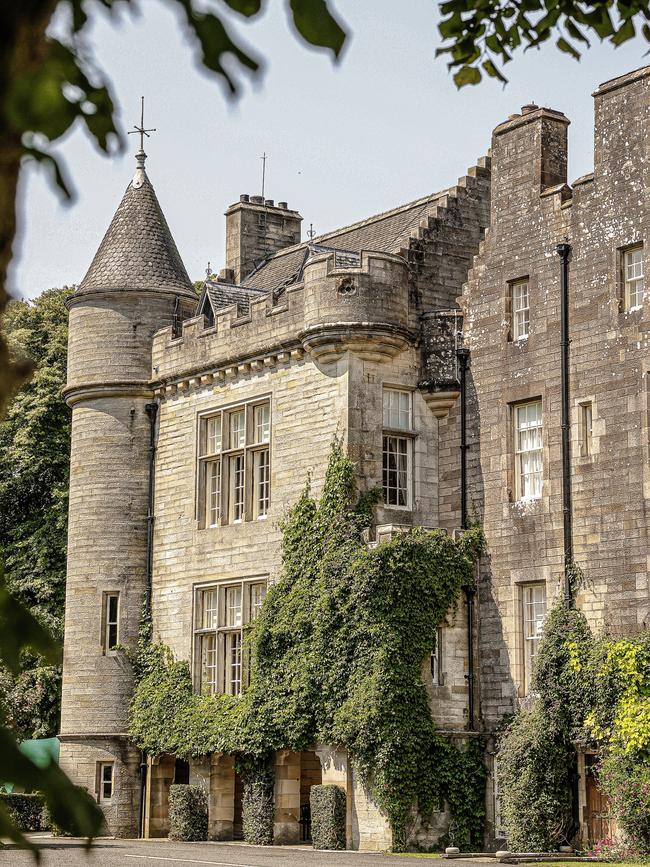
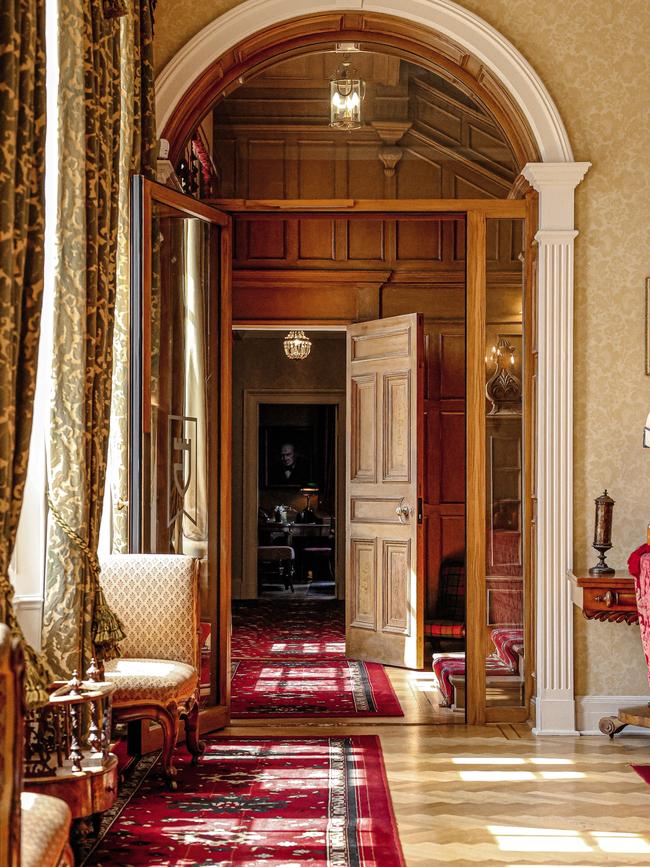
-
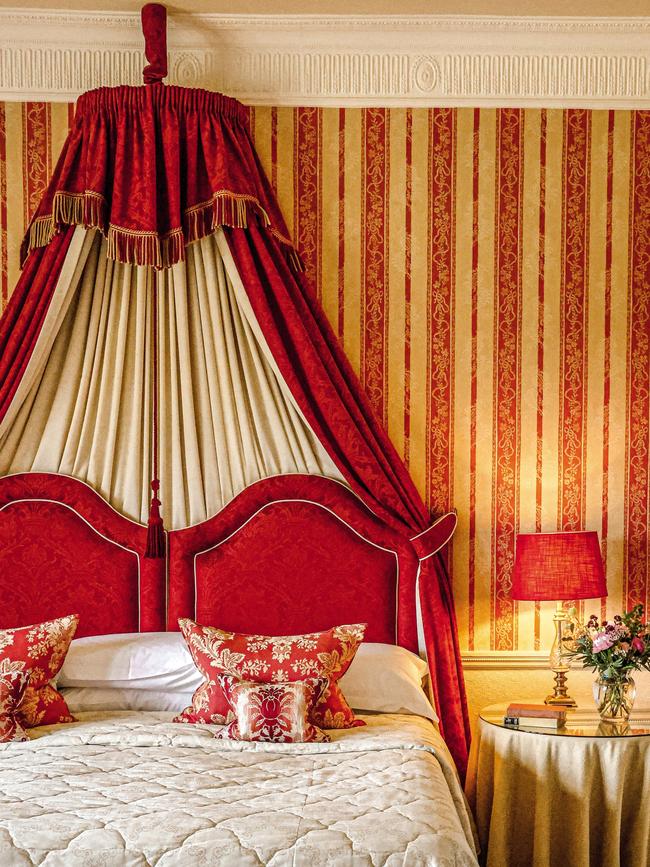
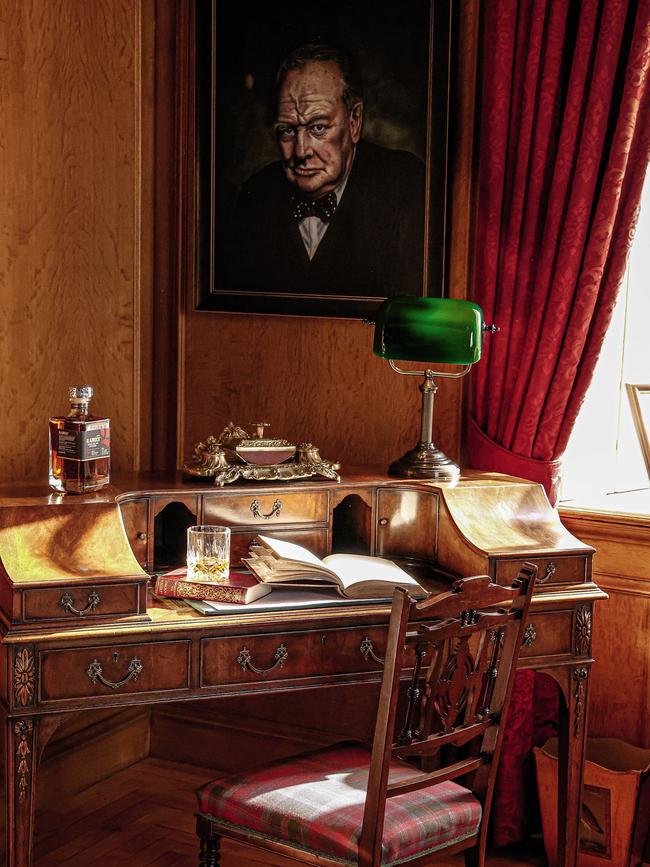
GLENAPP CASTLE
Built in the late 19th century, Glenapp is a classic of what has become known as the Scottish baronial style – lots of towers and turrets and crenellations but no actual blood stains, unless you count the bags of grouse and the occasional antlered stag. Today Glenapp is one of the finest hotels in Scotland.
Its atmosphere will be familiar to viewers of Downton Abbey. The drawing room is the size of a tennis court with high ceilings, marble fireplaces, fluted columns, sprawling chandeliers, and staff who glide silently between the sofas with tea and warm scones in the afternoons and cocktails in the evenings. Up the grand staircase, past the glowering portraits, are vast bedrooms, many with their own living rooms, that offer views over the manicured 15-hectare grounds. The top floor is taken up with a huge penthouse suite – four bedrooms, two living areas, its own dining room and lounge, and sauna.
With fresh ingredients from its walled garden, good food is central to Glenapp from formal dining – starched linen, silver service and wonderful tasting menus – to the more casual brasserie, the Azalea, where you lunch beneath the vines and figs of a fabulous Victorian conservatory. Among the many activities offered at Glenapp are sea safaris, shooting parties, and garden visits. I took an archery lesson, prompting my tutor – his name was Littlejohn, as though he had arrived straight from Sherwood Forest – to declare I was “a centimetre from perfect”. I’m putting that on my business card. glenappcastle.com
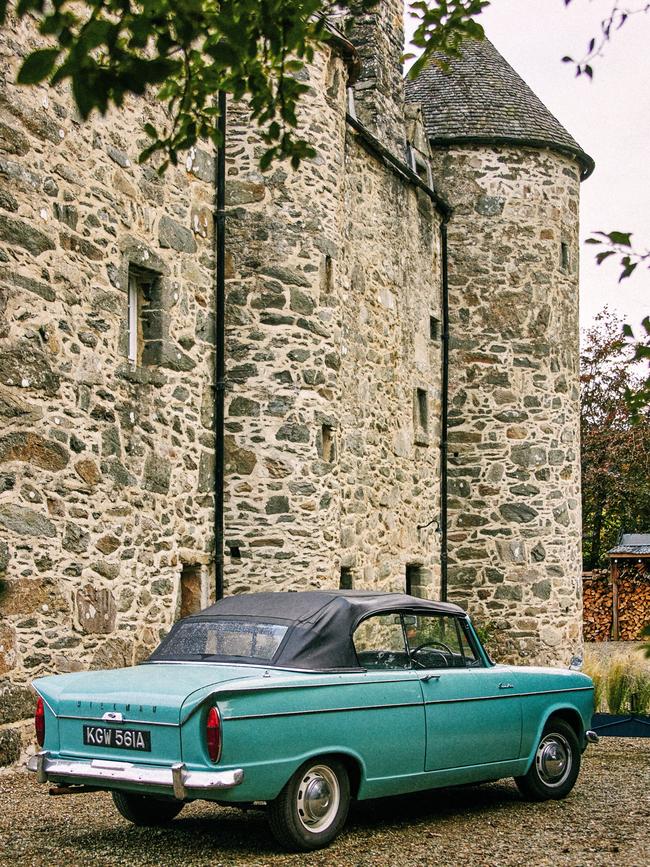
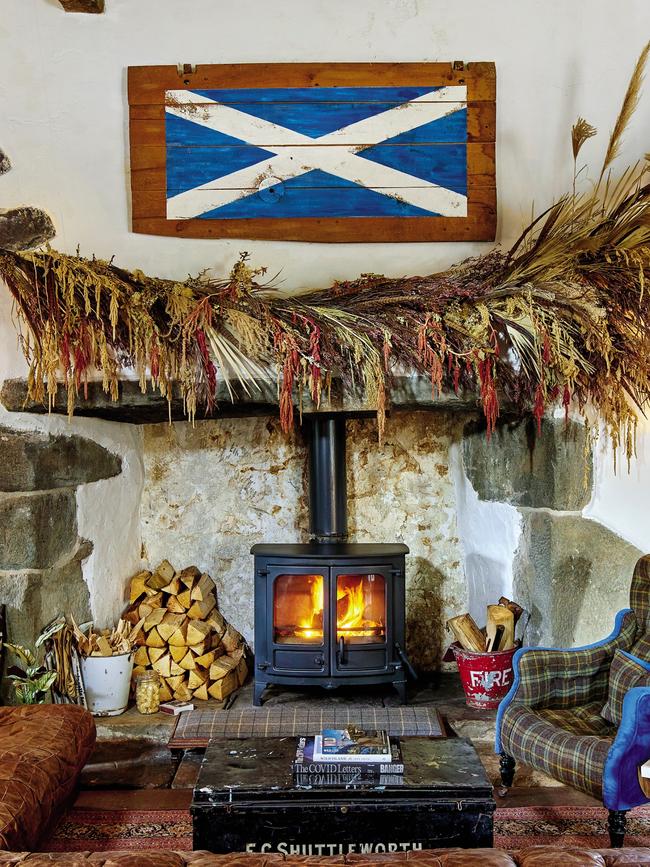
-
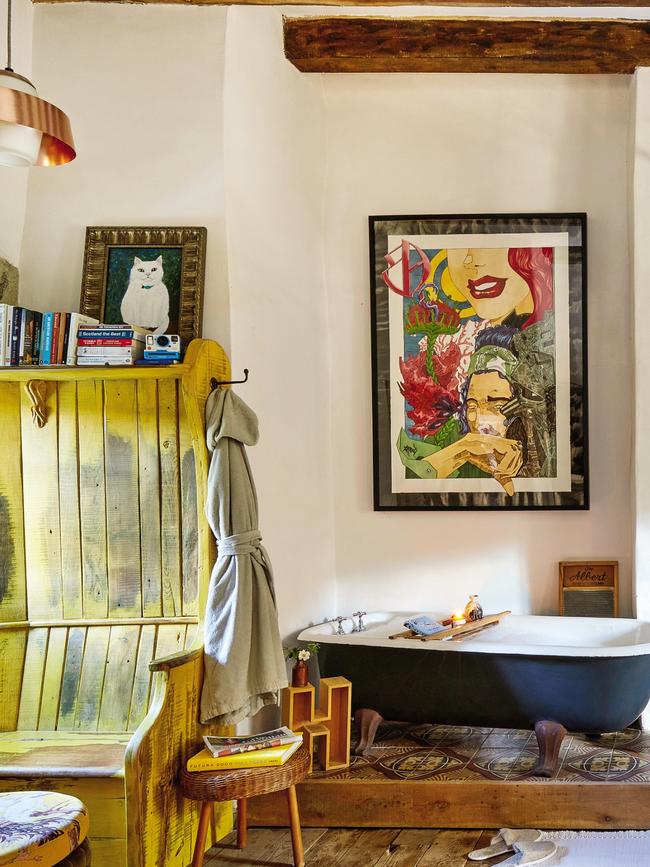
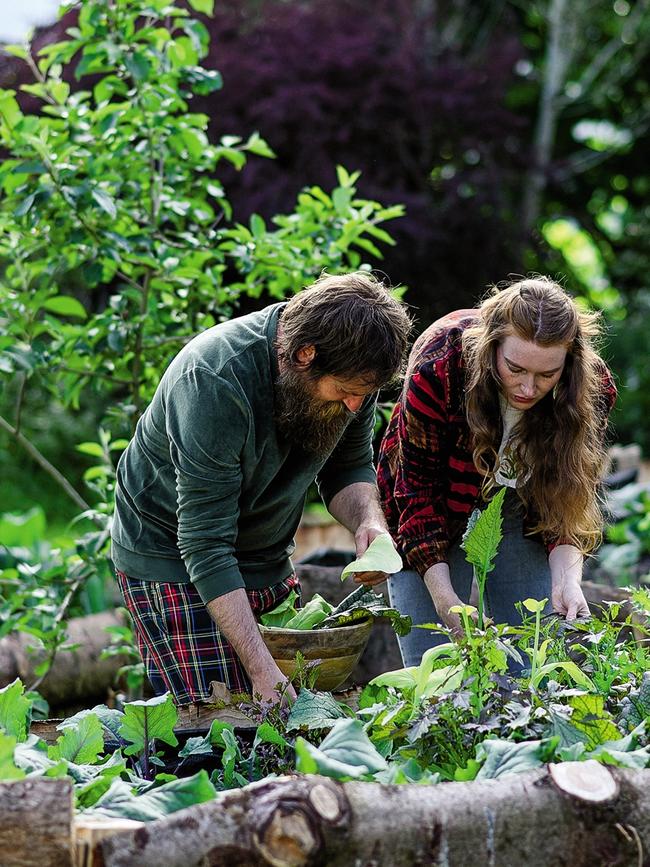
KILMARTIN CASTLE
Australian Simon Hunt had no idea you could actually buy a castle, let alone for the price of a decent terraced house in Edinburgh, when he spotted a listing for Kilmartin Castle on an estate agent’s website. Having fallen in love with Scotland on a family holiday, he and his partner, Stef Burgon, threw themselves into a seven-month renovation from floors to rafters of this 16th-century tower castle.
The result is a triumph, a fabulous property with five bedrooms, each with its own ensuite, rented as a unit for exclusive use and imbued with the young couple’s personalities – funky, creative, fun. Simon and Stef’s sympathetic renovation has maintained Kilmartin’s medieval authenticity – exposed stonework, vaulted ceilings, flagstone floors – but with an eclectic mix of furnishings, bric-à-brac, vintage pieces, artworks, and quirky imaginative stuff collected from flea markets and antique emporiums around the world. There are Persian rugs and copper baths, French shop signs and old cinema posters, ship lanterns and contemporary street art. There are also rain showers, underfloor heating, glorious bedding and a kitchen of modern appliances. The New York Times has listed it among the 52 best places in the world to stay. It deserves the accolade.
There is an emphasis in Kilmartin on experiences. You can head out among Hebridean islands on a sea safari in an antique wooden boat. You can go foraging. There are Gaelic lessons combined with wild swimming and wonderful personal chefs who will create a bespoke dinner for you. But probably best of all is the hike with Aaron Watson, the archaeologist at Kilmartin Museum. Kilmartin Glen has the highest concentration of prehistoric monuments in Scotland: mysterious rock art, stone circles, and a linear cemetery of burial cairns. kilmartincastle.com
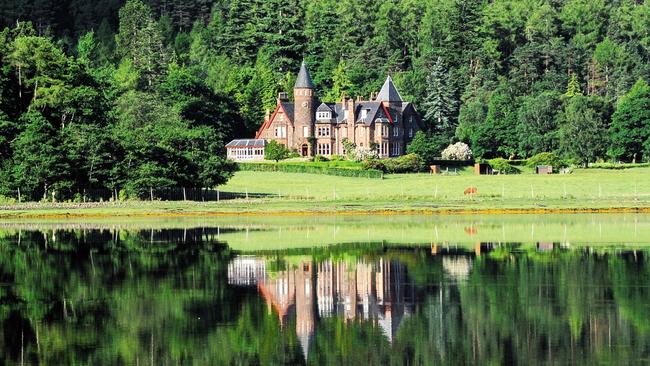
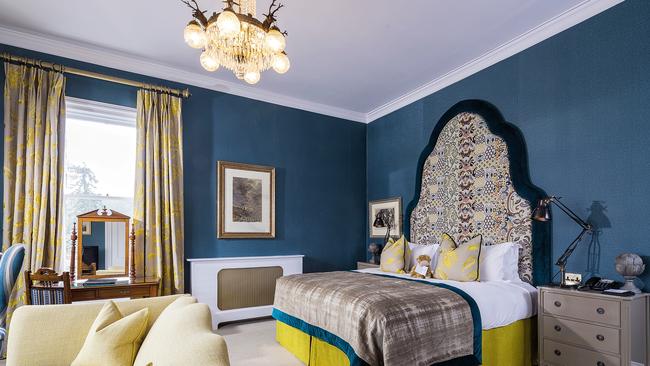
THE TORRIDON
Perhaps I’m stretching it a bit to include The Torridon in a compendium of castles. But it has a gatehouse, a tower, an estate, a sense of history, a defensive position commanding a sea loch, and a sense of old walls keeping the hurly-burly at bay. That says castle to me. Built as part of a sprawling estate in the 19th century, The Torridon is a Highland retreat. It is so remote, looking across a long sea loch to the heights of Beinn Alligin and Liathach mountain, that all the materials for the great house had to be brought in by sea. As for the rich soil in the kitchen garden, it came, like Christianity, from Ireland.
Having been a grand house and grand hunting lodge, The Torridon became a grand hotel in the 1960s. When ownership passed to David and Geraldine Gregory, in the 1990s, it became one of the finest hotels in Scotland. It is also one of the friendliest. There is a warm embrace about The Torridon – the delightful staff, the armchairs in front of crackling fires, the window seats with their views of falls.
In such superb Highland landscapes, The Torridon is all about the outdoor life. There is trekking country. There is also mountain biking, clay-pigeon shooting, wild swimming, fishing, and Munro bagging. For those who prefer just to look at the out of doors, there are tastings in its well-stocked whisky bar with splendid views through the tall windows – just as invigorating as a Highland walk, I say. With any luck, it will be raining and you can spend an idle afternoon of board games and plates of scones, nodding off with a book in front of the fire. The award-winning restaurant, the 1887, deserves special mention. Down in the Victorian walled kitchen garden, among the greenhouses and the espaliered apple trees and the rich Irish loam, I found the head gardener busy with her vegetable plots, anxious to keep the demanding chefs happy. The Torridon’s renovated stables have another 12 rooms, while the more casual Beinn Bar is a dogs and muddy boots kind of place. thetorridon.com
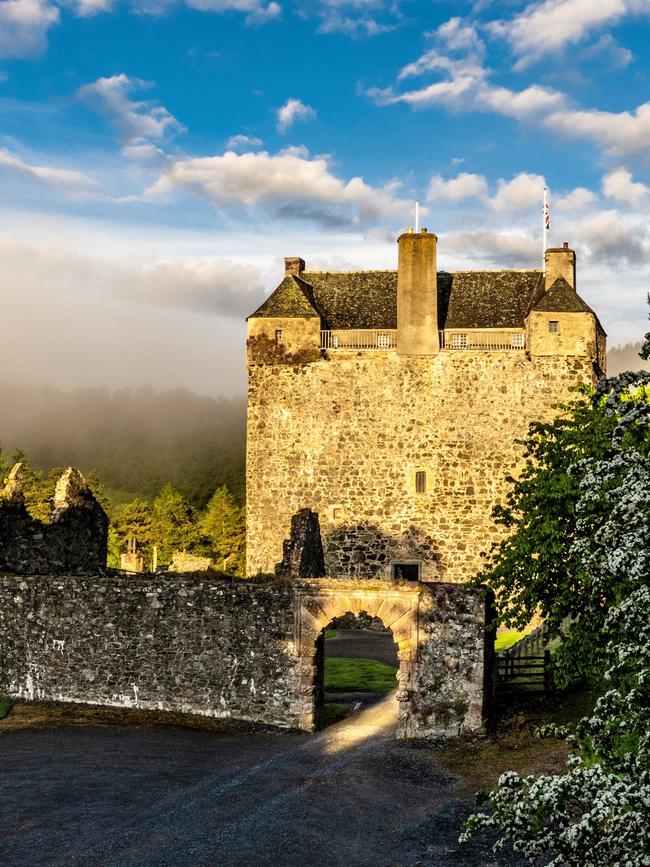
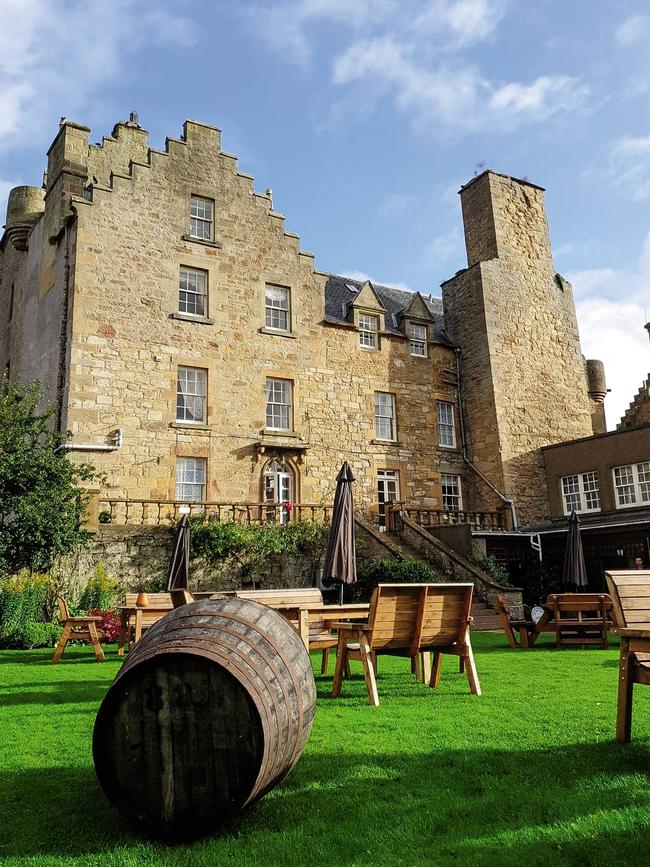
NEIDPATH CASTLE
When Mary, Queen of Scots, landed in Leith in 1561 as a widowed 18-year-old, one of her few friends in Scotland was William, the fifth Lord Hay of Yester, the laird of Neidpath Castle. William and Mary had been childhood playmates, and, two years later, the young queen came up the drive of Neidpath in the Scottish Borders to welcoming faces. I feel sure she was as happy there as I was.
A four-square tower castle, built circa 1350, Neidpath is surrounded by grand woodlands of beech, poplar and fir trees. Beneath its stone walls, salmon leap in the coppery waters of the River Tweed. Walter Scott called this his favourite view in Scotland, while an 18th-century visitor enthused about Neidpath’s “air of fairyland and enchantment”.
The first two floors of the tower consist of echoing great rooms with vaulted ceilings and wood-panelled walls hung with tapestries. Climb further on the ancient stone staircase, worn by six centuries of knights’ boots, and you reach Mary’s delightful and quirky apartment, with a spacious living room and a bedroom beyond, that offers one of the most adorable and historic stays in an exclusive-use castle in Scotland.
It is a failing of some castle owners to over-renovate their old properties, squeezing the life out of them, so they end up feeling either like a modern hotel or a kind of “castle kitsch” – all fake suits of armour, baronial shields and velvet tasselled curtains. Not so Neidpath. Everything about it – the four-poster bed, the fur-draped chaise longue, the oak chests, the Chinese screens, the freestanding bathtub, the velvet drop-leaf sofas, the fireplaces – is perfectly in tune with these old rooms. The floorboards creak, the slightly wonky plaster i s painted with a subtle palette of chalky colours, doors open on secret staircases and I wanted to stay for a month. The castle is only one of Neidpath’s properties. Check out Barns Tower, perfect for a family of four, or smart Neidpath Barmkin, which sleeps six. neidpathcastle.com
DORNOCH CASTLE
Dornoch is one of Scotland’s most charming villages, with streets of quiet stone houses, cute tea shops, a local distillery, numerous celebrity fans, fine windswept beaches on the Moray Firth and a world-famous golf course. Its charm, as well as the beautiful pint-sized cathedral, has always attracted a motley crew. Madonna had her son Rocco baptised in the cathedral, while Elon Musk married Talulah Riley here. Dornoch is also home to the Witch’s Stone, a memorial erected to mark the site of the last known execution of a witch in Scotland. Locals reported seeing the witch of Assynt some time in the 17th century, landing on the roof of the cathedral on her broomstick.
Opposite the cathedral and bang in the middle of the town is the 16th-century Dornoch Castle Hotel, its tower leering over the High Street and the cathedral. Quirky and a bit rough around the edges, there’s a sense of Fawlty Towers about the hotel, a sort of haphazard unpredictability, but I loved it. Bag one of the tower rooms with four-poster beds that could sleep five and fireplaces big enough to park the Volvo. No witches, but there’s a harmless ghost: a chap who was imprisoned in the castle dungeons before being hanged for sheep stealing. The bar, with its roaring fire, is a promising venue for evening drinks; it’s stocked with almost 500 whiskies. For dinner head up the street to the Golden Gorse, one of the finest restaurants on this coast.
But there is a final surprise in the village of Dornoch: its golf course, the Royal Dornoch. With a heritage that goes back to 1616, the Royal Dornoch is classed as one of the best courses in the world. When Tom Watson played the links, he claimed it was “the most fun I have ever had on a golf course”. dornochcastlehotel.com
The writer was a guest of Away from the Ordinary, which arranges bespoke itineraries in Scotland (awayfromtheordinary.com). The Caledonian Sleeper runs every evening from London Euston to various destinations in Scotland including Edinburgh, Fort William, Glasgow and Inverness. sleeper.scot

To join the conversation, please log in. Don't have an account? Register
Join the conversation, you are commenting as Logout